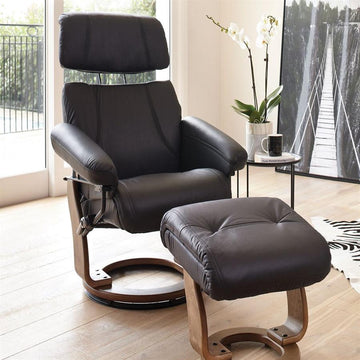The desk and chair are complementary to each other, yet we often prioritize the beauty and space of the desk over the comfort and quality of the chair. In today’s digital age, people spend more time on screens than sleeping. Whether working long hours in an office or a home setup, a comfortable chair is essential to prevent fatigue and discomfort from prolonged sitting. A supportive chair quietly boosts work efficiency, while an uncomfortable one can lead to back strain, leg problems, and carpal tunnel issues, potentially affecting work productivity and overall well-being.
One overlooked aspect of office life is how comfortable chairs affect productivity. Employers often pressurize staff to meet deadlines without considering the need for ergonomic seating. Since employees vary in physique and comfort preferences, offices should offer a variety of chairs so staff can choose the one that fits them best. Chairs are also a crucial part of home decor, and selecting one based on the user's needs—be it for work, relaxation, or other purposes—is vital.
What Makes a Perfect Chair?
A perfect chair is determined by its height, weight support, back support, and center of gravity. Here are key features to check when purchasing a chair:
Seat Comfort
- Soft Yet Supportive: The seat should be soft enough to sit on comfortably but also provide firm back support. A seat that's too soft will cause you to sink in, making it hard to get up. If it's too hard, sitting for even short periods can become uncomfortable.
Seat Angle
- Body Alignment: Your thighs should be perpendicular to the floor when seated. Look for a seat height suitable for your body. While most chairs are around 18 inches in height, an adjustable seat is preferable for proper alignment.
Seat Depth
- Leg Room: Taller people should select a chair with greater depth to accommodate longer legs, while shorter individuals or those with knee pain should choose a chair with a shallower depth. Ideally, you should be able to sit fully back in the chair, with the bottom of the seat touching your calves without too much pressure.
The Chair Back
The backrest is a crucial component for reading or using mobile devices, as it supports proper posture and prevents back injuries. There are two primary back styles:
- Tight Cover Back: Offers a more structured and formal look.
- Loose Cushions: Provide a cozy, more relaxed feel. A combination of cushion and tight cover is also available for added comfort and style.
In addition to offering back support, the chair back adds style, pattern, and color, contributing to the overall look of the chair.
Arms
Armrests on the side of the chair are designed for arm relaxation, especially when spending long periods seated. They are made from materials such as wood, metal, or plastic. When testing a chair, ensure that your arms rest comfortably on the armrests without needing awkward adjustments.
Conclusion
By focusing on the above key points, you can find a comfortable, classy chair for both home and office use. This helps prevent backaches and promotes a healthy, happy life during and after your working years.










